The success of Gati Shakti hinges on quicker TAT. Deepti Thore evaluates this scope for transformation in roads, mass transport and logistics infrastructure.
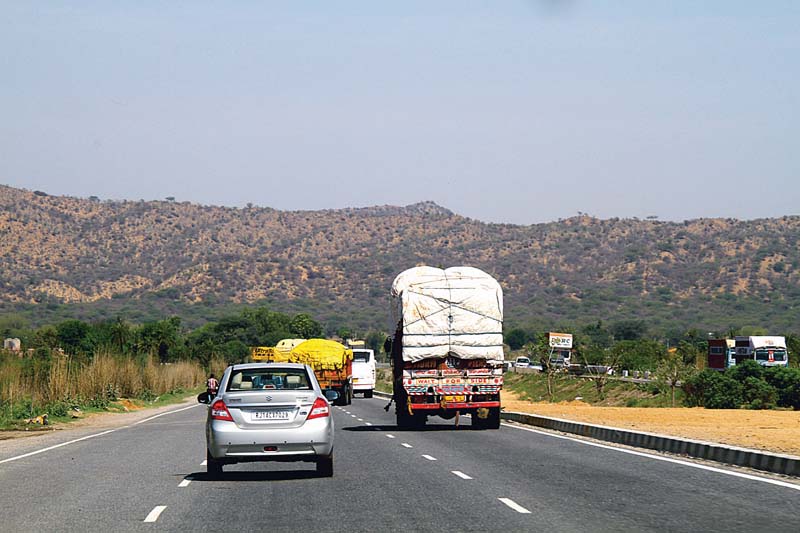 In this year’s Union Budget, infrastructure continued to be one of the focus areas. The FM laid down priorities that also included the National Master Plan(NMP), PM GatiShakti, which was cited as a transformative approach for economic growth and sustainable development. Of the seven engines driving it, roads, ports, mass transport and logistics infrastructure found a prominent mention in the speech. Planning and development of major infrastructure projects in silos by different departments have always been chaos in terms of coordination. It has not only posed to be inconvenient for departments but it has also led to wasteful expenditure. To deal with such issues, encourage holistic planning from different stakeholders and streamline the entire process of infrastructure development, Narendra Modi, Prime Minister of India, introduced ‘PM GatiShakti’ programme which incorporates the infrastructure schemes of various Ministries and State Governments including Bharatmala, Sagarmala, inland waterways, dry/land ports, UDAN etc. All the departments now have visibility of each other’s projects through a centralised portal. The programme is a giant stride towards the country’s target to meet the five trillion USD economy.
In this year’s Union Budget, infrastructure continued to be one of the focus areas. The FM laid down priorities that also included the National Master Plan(NMP), PM GatiShakti, which was cited as a transformative approach for economic growth and sustainable development. Of the seven engines driving it, roads, ports, mass transport and logistics infrastructure found a prominent mention in the speech. Planning and development of major infrastructure projects in silos by different departments have always been chaos in terms of coordination. It has not only posed to be inconvenient for departments but it has also led to wasteful expenditure. To deal with such issues, encourage holistic planning from different stakeholders and streamline the entire process of infrastructure development, Narendra Modi, Prime Minister of India, introduced ‘PM GatiShakti’ programme which incorporates the infrastructure schemes of various Ministries and State Governments including Bharatmala, Sagarmala, inland waterways, dry/land ports, UDAN etc. All the departments now have visibility of each other’s projects through a centralised portal. The programme is a giant stride towards the country’s target to meet the five trillion USD economy.
Aimed at generating multiple employment opportunities, cutting down on logistics cost, improving supply chains and making local goods globally competitive, the 100-lakh crore project, PM GatiShakti supports multi-modal connectivity to provide integrated and seamless connectivity for faster movement of people, goods and services. The PM GatiShakti programme is based on six main pillars which include Comprehensiveness, Prioritisation, Optimisation, Synchronisation, Analytical and Dynamic. On the basis of these, various Ministries and Departments will have visibility of each other’s activities providing critical data while planning & execution of projects in a comprehensive manner. Different Departments will be able to prioritise their projects through cross-sectoral interactions. For the transportation of goods from one place to another, the plan will help in selecting the most optimum route in terms of time and cost. The programme will help synchronise activities ensuring coordination between each department. The master plan will use the latest satellite imagery for visual understanding; facilitate coordination among all stakeholders; synchronise implementation of projects; offer planning tools for route planning; facilitate land acquisition, permissions, and congestion reduction; and implement dashboard-based periodic monitoring for progress.
Multi-modal connectivity
 The multi-modal connectivity enabled by the GatiShakti will help facilitate the last-mile connectivity of infrastructure and also reduce travel time for people. PM Gati Shakti, includes 22 Greenfield Expressways, 23 key infrastructure projects ,35 Multi-Modal Logistics(MMLPs) & other highway projects proposed for improving multi-modal connectivity. The Ministry of Road Transport and Highways (MORTH) has made significant progress under the programme aimed at improving multi-modal connectivity and last-mile connectivity across the country. Mumbai Port Trust has also taken the lead in transforming the logistics sector through a slew of multi-modal connectivity projects founded on two pillars, namely cargo-related projects and Sea Tourism. Sabarmati Seaplane service is another such example for multi-modal connectivity.
The multi-modal connectivity enabled by the GatiShakti will help facilitate the last-mile connectivity of infrastructure and also reduce travel time for people. PM Gati Shakti, includes 22 Greenfield Expressways, 23 key infrastructure projects ,35 Multi-Modal Logistics(MMLPs) & other highway projects proposed for improving multi-modal connectivity. The Ministry of Road Transport and Highways (MORTH) has made significant progress under the programme aimed at improving multi-modal connectivity and last-mile connectivity across the country. Mumbai Port Trust has also taken the lead in transforming the logistics sector through a slew of multi-modal connectivity projects founded on two pillars, namely cargo-related projects and Sea Tourism. Sabarmati Seaplane service is another such example for multi-modal connectivity.
Ongoing Projects
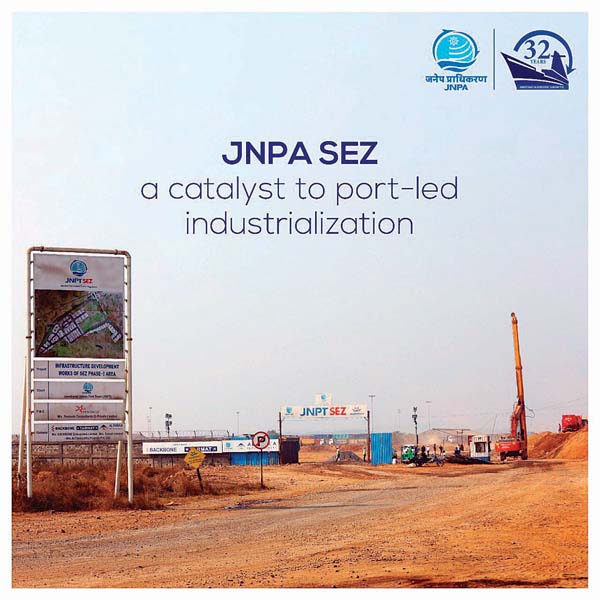 Jawaharlal Nehru Port Authority (JNPA) has undertaken multiple projects aligning with the PM’s initiative of ‘Gati Shakti’. It is involved in projects including Coastal Berth, JNPA SEZ, Centralized Parking Plaza, Fourth Container Terminal, Road Widening, Dry Port at Wardha & Jalna, Berthing facility for ROPAX/RORO, Common Railyard, Additional Liquid Cargo Jetty etc. which will be a catalyst for port-based industrialisation in India and make the EXIM trade even more efficient with ease of operation. These will also bolster the nation’s economy. According to Sanjay Sethi, IAS, Chairman, JNPA, “JNPA is the leading port in the country that provides state-of-the-art facilities. These projects under Gati Shakti will contribute to all-inclusive progress and development of the nation.”
Jawaharlal Nehru Port Authority (JNPA) has undertaken multiple projects aligning with the PM’s initiative of ‘Gati Shakti’. It is involved in projects including Coastal Berth, JNPA SEZ, Centralized Parking Plaza, Fourth Container Terminal, Road Widening, Dry Port at Wardha & Jalna, Berthing facility for ROPAX/RORO, Common Railyard, Additional Liquid Cargo Jetty etc. which will be a catalyst for port-based industrialisation in India and make the EXIM trade even more efficient with ease of operation. These will also bolster the nation’s economy. According to Sanjay Sethi, IAS, Chairman, JNPA, “JNPA is the leading port in the country that provides state-of-the-art facilities. These projects under Gati Shakti will contribute to all-inclusive progress and development of the nation.”
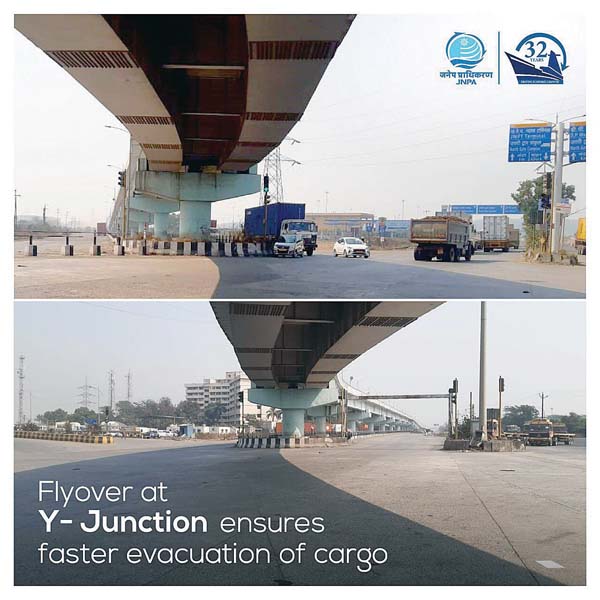 Jawaharlal Nehru Port Trust(JNPT) plans to invest Rs. 4,300 crore under PM Gati Shakti project to develop the second phase of the fourth terminal and an SEZ, he confirmed. The first phase was completed in December 2018, building a 30 mtpa terminal at an investment of Rs. 4719 crore. The JNPT SEZ aims to set a new benchmark in port-led industrialisation. It is developed by Nhava Sheva Business Park which will meet the requirements for EXIM trade. The flyover at JNPA North Gate Complex is connected to National Highway 348, 348A, and port terminals, ensuring ease of transport; and smooth vehicular traffic resulting in fuel cost reduction. It is one of the crucial initiatives under Sagarmala projects.
Jawaharlal Nehru Port Trust(JNPT) plans to invest Rs. 4,300 crore under PM Gati Shakti project to develop the second phase of the fourth terminal and an SEZ, he confirmed. The first phase was completed in December 2018, building a 30 mtpa terminal at an investment of Rs. 4719 crore. The JNPT SEZ aims to set a new benchmark in port-led industrialisation. It is developed by Nhava Sheva Business Park which will meet the requirements for EXIM trade. The flyover at JNPA North Gate Complex is connected to National Highway 348, 348A, and port terminals, ensuring ease of transport; and smooth vehicular traffic resulting in fuel cost reduction. It is one of the crucial initiatives under Sagarmala projects.
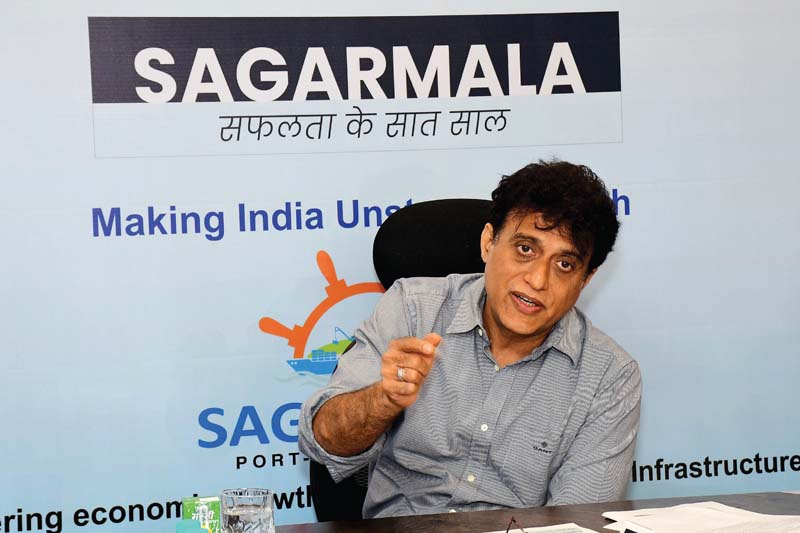
The work of Palwal Elevated Highway on NH -19 in Haryana has also been completed. The 3.25 km long, four-lane elevated structure has been constructed at a total cost of Rs. 215.24 crores. The 3,300 km long East – West Corridor connecting Silchar to Porbandar, is a part of Golden Quadrilateral, a dream project of revered Atal Bihari Vajpayee. 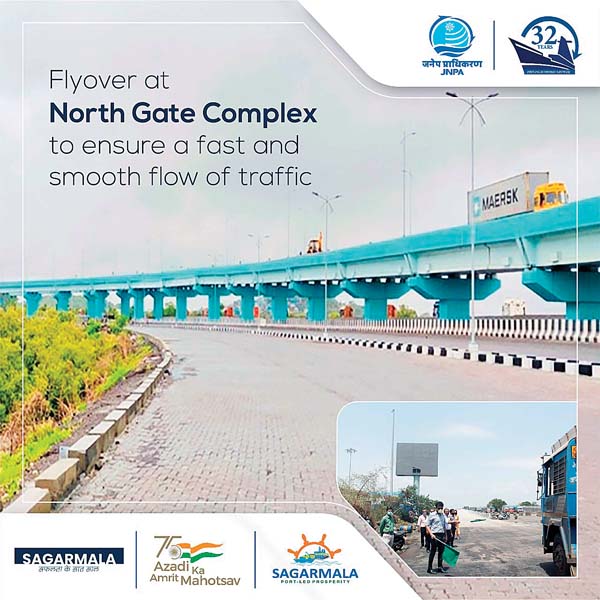 The section from Ghoshpukur to Dhupiguri on NH31DA passing through Fulbari, Fatapukur, Jalpaiguri, Maynaguri and culminating at Dhupguri in West Bengal is a strategically important section of the E-W Corridor. It has significantly increased the connectivity and has proved to be a gateway to North-East states having immense strategic and socio-economic importance. Passing through the Chicken Neck, it connects the trade routes with neighbouring countries like Bangladesh, Nepal and Bhutan. Also, it has reduced the travel time by approximately one hour between Siliguri and Alipurduar in West Bengal. Recently a foundation stone was also laid by the Union Minister, Nitin Gadkari, for 12 National Highway Projects and seven CRIF Projects in Hyderabad.
The section from Ghoshpukur to Dhupiguri on NH31DA passing through Fulbari, Fatapukur, Jalpaiguri, Maynaguri and culminating at Dhupguri in West Bengal is a strategically important section of the E-W Corridor. It has significantly increased the connectivity and has proved to be a gateway to North-East states having immense strategic and socio-economic importance. Passing through the Chicken Neck, it connects the trade routes with neighbouring countries like Bangladesh, Nepal and Bhutan. Also, it has reduced the travel time by approximately one hour between Siliguri and Alipurduar in West Bengal. Recently a foundation stone was also laid by the Union Minister, Nitin Gadkari, for 12 National Highway Projects and seven CRIF Projects in Hyderabad.
 Some of the major Expressways and Corridors, which are under construction stage are Delhi – Mumbai Expressway, Ahmedabad — Dholera Expressway, Delhi-Amritsar-Katra Expressway, Bengaluru-Chennai Expressway, Ambala-Kotputli Expressway, Amritsar-Bhatinda-Jamnagar Expressway, Raipur-VZG Expressway, Hyderabad-VZG Expressway, UER II, Chennai-Salem Expressway and Chittor-Thatchur Expressway. Some of the major key infrastructure projects, which are under construction stage include construction of Zojila Tunnel (Ladakh), roads to connect Krishnapatnam Port (Andhra Pradesh), a major bridge over Middle Strait Creek (Andaman & Nicobar Islands), two- laning of Lalpul-Manmao changing road (Arunachal Pradesh), six-lane bridge over Ganga bridge at Phaphamau (UP) and 4-lane bridge over Brahmaputra between Dhubri-Phulbari (Meghalaya). As a part of its recent achievement, National Highways Authority of India (NHAI) team accomplished the Guinness World Record for successfully completing the construction of 75 km continuous bituminous concrete in a single lane on NH 53 between Amravati and Akola
Some of the major Expressways and Corridors, which are under construction stage are Delhi – Mumbai Expressway, Ahmedabad — Dholera Expressway, Delhi-Amritsar-Katra Expressway, Bengaluru-Chennai Expressway, Ambala-Kotputli Expressway, Amritsar-Bhatinda-Jamnagar Expressway, Raipur-VZG Expressway, Hyderabad-VZG Expressway, UER II, Chennai-Salem Expressway and Chittor-Thatchur Expressway. Some of the major key infrastructure projects, which are under construction stage include construction of Zojila Tunnel (Ladakh), roads to connect Krishnapatnam Port (Andhra Pradesh), a major bridge over Middle Strait Creek (Andaman & Nicobar Islands), two- laning of Lalpul-Manmao changing road (Arunachal Pradesh), six-lane bridge over Ganga bridge at Phaphamau (UP) and 4-lane bridge over Brahmaputra between Dhubri-Phulbari (Meghalaya). As a part of its recent achievement, National Highways Authority of India (NHAI) team accomplished the Guinness World Record for successfully completing the construction of 75 km continuous bituminous concrete in a single lane on NH 53 between Amravati and Akola
Building world-class infrastructure
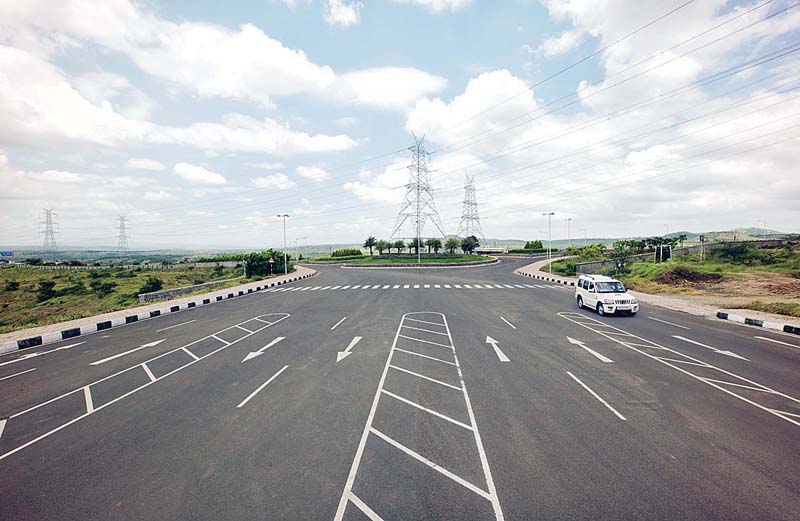 The seven engines highlighted by the Finance Minister, Nirmala Sitharaman during her speech at the Union Budget 2022, are supported by the complementary roles of Energy Transmission, IT Communication, Bulk Water & Sewerage, and Social Infrastructure. To build world class infrastructure to support road transport, the aim is to build 25,000 km of national highways in 2022-23, develop a unified logistics interface and open source mobility stack. Rs.20,000 crore will be mobilised through innovative ways of financing to complement the public resources. The need is for multi-modal connectivity between urban transport and railway stations. The focus should also be on the ‘National Ropeways Development Plan’ and capacity building for infrastructure projects.
The seven engines highlighted by the Finance Minister, Nirmala Sitharaman during her speech at the Union Budget 2022, are supported by the complementary roles of Energy Transmission, IT Communication, Bulk Water & Sewerage, and Social Infrastructure. To build world class infrastructure to support road transport, the aim is to build 25,000 km of national highways in 2022-23, develop a unified logistics interface and open source mobility stack. Rs.20,000 crore will be mobilised through innovative ways of financing to complement the public resources. The need is for multi-modal connectivity between urban transport and railway stations. The focus should also be on the ‘National Ropeways Development Plan’ and capacity building for infrastructure projects.
For the seamless multi-modal movement of goods and people(mass transport), according to Sitharaman, the data exchange among all mode operators will be brought on the Unified Logistics Interface Platform (ULIP), designed for Application Programming Interface (API). This will provide for efficient movement of goods through different modes, reducing logistics cost and time, assisting just-in-time(JIT) inventory management, and in eliminating tedious documentation. Most importantly, this will provide real-time information to all stakeholders, and improve international competitiveness. She said an open-source mobility stack, for organising seamless travel of passengers will also be facilitated.
The PM GatiShakti will address voids through social development projects over and above the central and state schemes in place. The budgetary allocation included an Rs.1,500 fund to kickstart the development programmes. Under the ‘Vibrant Villages Programme’, villages on the Northern border will gain access to accelerated development of infrastructure, and road connectivity expected to boost the demand for vehicles in the region. The industry will also watch out for contracts to be tendered for the implementation of multimodal logistics parks at four locations through PPP mode in 2022-23. 100 PM GatiShakti cargo terminals for multimodal logistics facilities were also announced with a three-year development plan.

























